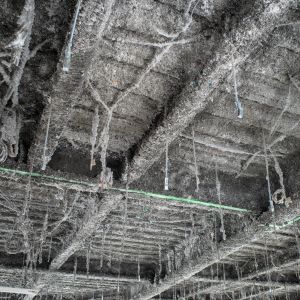Types of Fireproofing Options for Steel
The significance of fire safety lies in its ability to prevent catastrophic outcomes. In the event of a fire, the rapid spread of flames and smoke can lead to extensive harm to individuals and assets. Implementing thorough fire safety protocols and practices can mitigate the likelihood of harm and ultimately preserve lives. In this article, we look at the types of fireproofing options for steel. This includes active and passive fireproofing methods such as cementitious fireproofing. As well as how a professional fireproofing company can help.
Why Steel Needs Fireproofing
 While steel may not necessarily melt, it can undergo deformation and weaken under extreme heat conditions. Applying fireproofing to steel ensures that a building retains its structural integrity during a fire, facilitating safer evacuation for a greater number of people. Structural steel remains resilient up to temperatures around 425°C before showing signs of softening. As the temperature climbs between 600°C and 650°C, the steel's strength diminishes by half, increasing the likelihood of failure, particularly under significant loads.
While steel may not necessarily melt, it can undergo deformation and weaken under extreme heat conditions. Applying fireproofing to steel ensures that a building retains its structural integrity during a fire, facilitating safer evacuation for a greater number of people. Structural steel remains resilient up to temperatures around 425°C before showing signs of softening. As the temperature climbs between 600°C and 650°C, the steel's strength diminishes by half, increasing the likelihood of failure, particularly under significant loads.
When a metal's flammability directly impacts safety, it requires attention. Even steel constructions can collapse during significant fires. To mitigate risks and ensure fires remain smaller and controllable, we implement a combination of active and passive fire protection measures provided by a reputable fireproofing company.
Passive Fireproofing Options for Steel
Passive fire protection materials shield steel structures from the potential impact of high temperatures during fires. These materials fall into two categories: non-reactive, including commonly used boards and sprays, and reactive, with thin film intumescent coatings such as cementitious fireproofing being the prevalent type. Passive fireproofing delays or obstructs the spread of fire or smoke effects without the need for system activation, typically without any movement involved.
The benefits of passive fireproofing:
- Contain fire in an area and ensure safe evacuation of people.
- Protect your property and assets.
- No additional human operations or interventions are needed (as opposed to active fireproofing where human intervention is needed.)
- Minimizes the amount of costly repairs in the event of a fire.
Active Fireproofing Options for Steel
Active fire protection systems encompass hoses, water spray mechanisms, deluge systems, sprinklers, firewater monitors, and steam enclosures surrounding flanges. Typically, water serves as the primary firefighting agent, although alternative substances like carbon dioxide may also be employed in certain instances. Active fire protection entails the implementation of measures to identify and warn about, halt, or confine a fire. This might entail manual intervention by an individual, such as deploying a handheld fire extinguisher. Alternatively, it could involve automated systems like smoke detectors that activate alarms or automatic sprinkler systems.
The benefits of active fireproofing:
- Identify and extinguish fires efficiently, reducing harm and averting casualties.
- Tailor solutions to suit the unique requirements of a structure or premises.
- Merge seamlessly with additional fire safety mechanisms to ensure thorough safeguarding.
Choosing the Right Fireproofing Option
Presently, water-based intumescent paints are extensively utilized due to their focus on health and safety considerations. These paints offer the additional benefit of preserving the visual appearance of steel structures as they are thin and allow the underlying geometry to remain visible. Creating a commercial fire protection system requires thorough observation of various elements surrounding the building's purpose and layout, occupancy levels, combustible materials present, structural height, geographical placement, adherence to local regulations and industry standards, as well as upkeep and examination needs. Consulting with an expert fire protection contractor offers numerous advantages, including maintaining cost efficiency and guaranteeing seamless integration and compliance of your entire fire, life, and safety system. Engaging with a fire protection professional helps to reduce expenses and dismiss any uncertainties.
Work with Experts in Fireproofing Measures
All things considered; fireproofing is an absolute must to keep building occupants safe. Professionals in fireproofing like EcoStar advise the incorporation of both passive and active fireproofing measures. The benefits of fireproofing are numerous, but most importantly it protects your assets from damage and inhabitants from injury or even death. We at EcoStar can help you with the fireproofing process, by advising on the best methods and ensuring your building follows laws and regulations. Do not hesitate to contact EcoStar and make fireproofing a worthwhile investment in fire safety.



